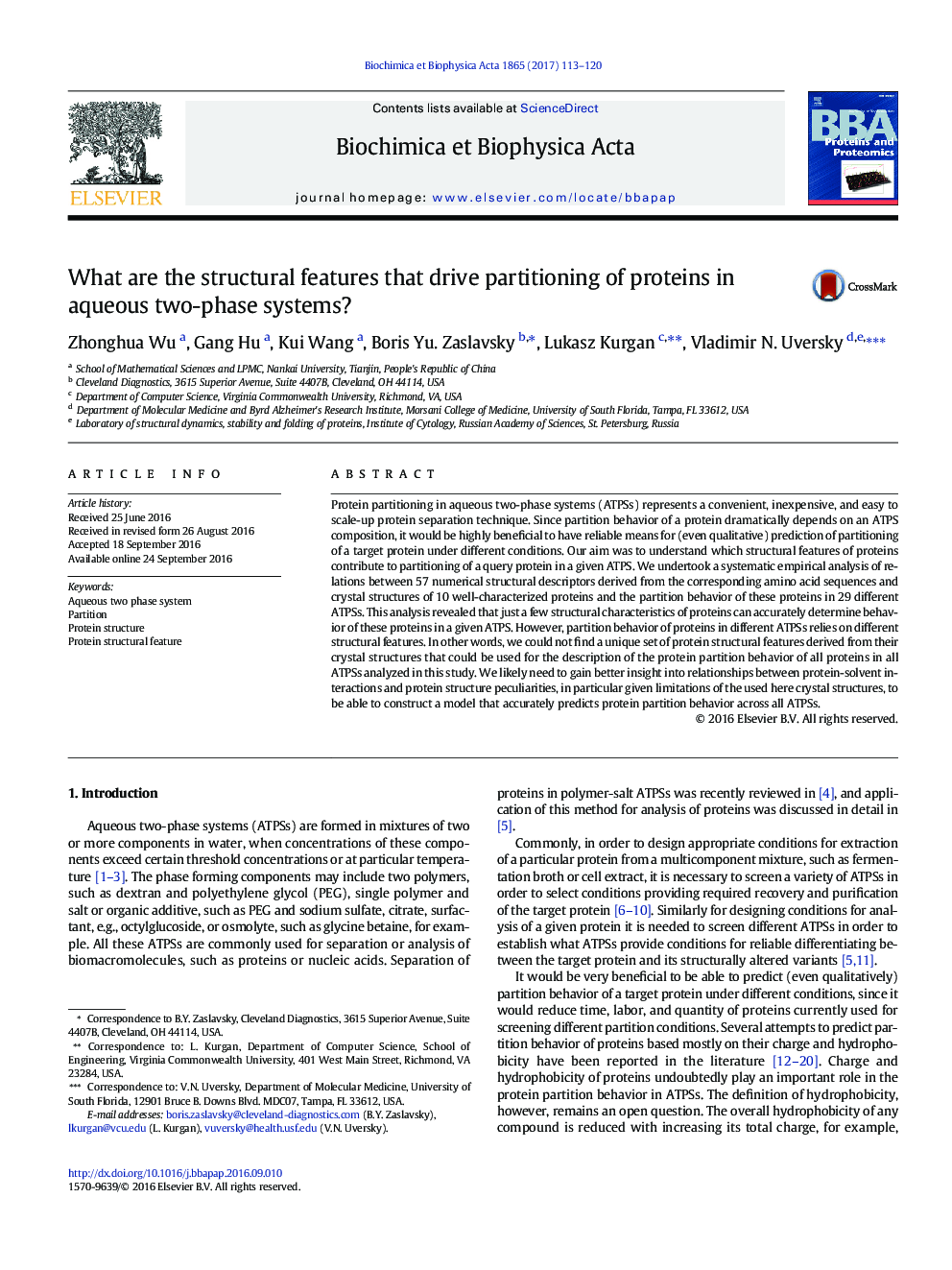| Article ID | Journal | Published Year | Pages | File Type |
|---|---|---|---|---|
| 5132064 | Biochimica et Biophysica Acta (BBA) - Proteins and Proteomics | 2017 | 8 Pages |
â¢The partition of 10 globular proteins in 29 different ATPSs is analyzedâ¢57 structural descriptors are derived from amino acid sequences and crystal structuresâ¢Partition behavior is accurately determined by a few structural characteristicsâ¢There is no unique set of structural features for global description of partitioningâ¢Protein partition behavior in different ATPSs relies on different structural features
Protein partitioning in aqueous two-phase systems (ATPSs) represents a convenient, inexpensive, and easy to scale-up protein separation technique. Since partition behavior of a protein dramatically depends on an ATPS composition, it would be highly beneficial to have reliable means for (even qualitative) prediction of partitioning of a target protein under different conditions. Our aim was to understand which structural features of proteins contribute to partitioning of a query protein in a given ATPS. We undertook a systematic empirical analysis of relations between 57 numerical structural descriptors derived from the corresponding amino acid sequences and crystal structures of 10 well-characterized proteins and the partition behavior of these proteins in 29 different ATPSs. This analysis revealed that just a few structural characteristics of proteins can accurately determine behavior of these proteins in a given ATPS. However, partition behavior of proteins in different ATPSs relies on different structural features. In other words, we could not find a unique set of protein structural features derived from their crystal structures that could be used for the description of the protein partition behavior of all proteins in all ATPSs analyzed in this study. We likely need to gain better insight into relationships between protein-solvent interactions and protein structure peculiarities, in particular given limitations of the used here crystal structures, to be able to construct a model that accurately predicts protein partition behavior across all ATPSs.
